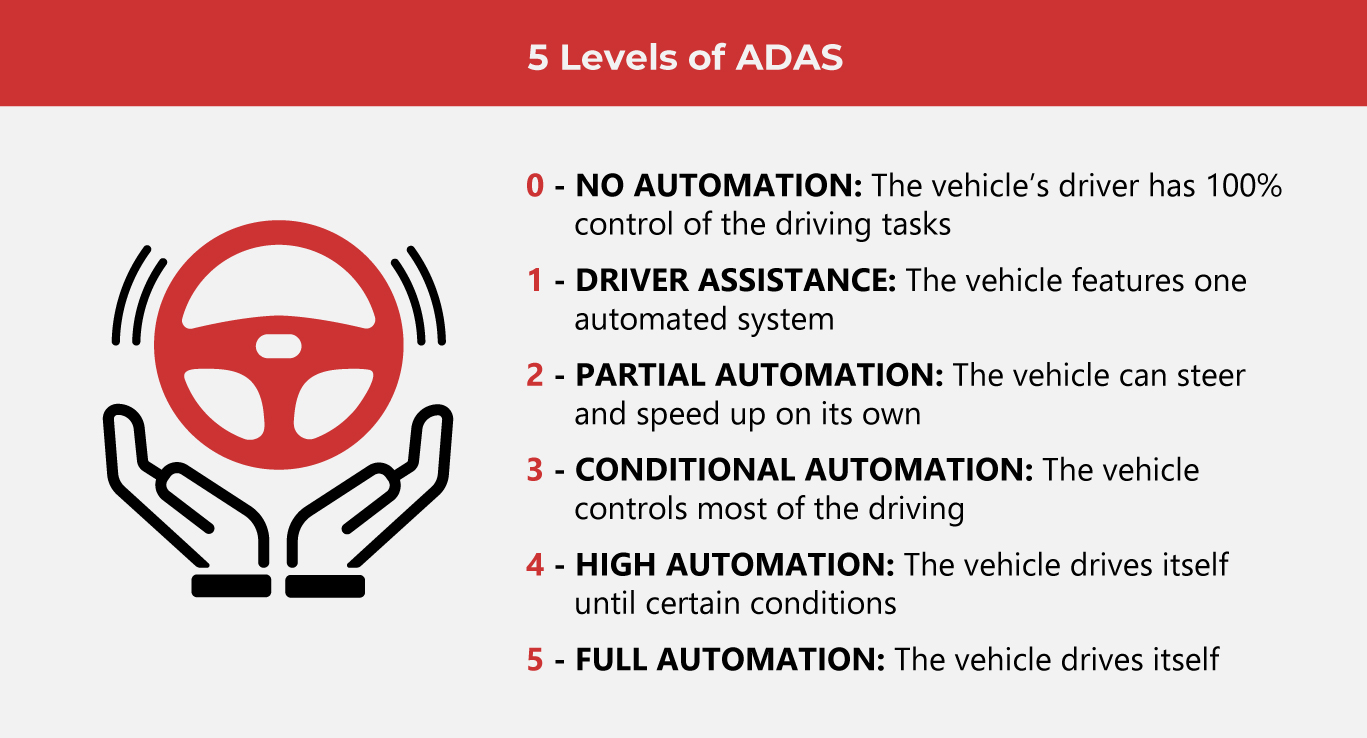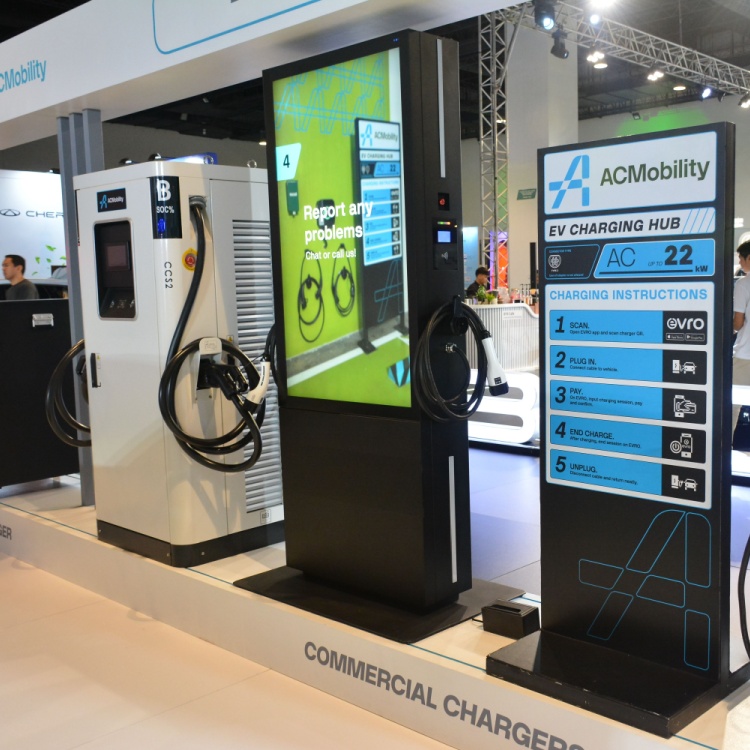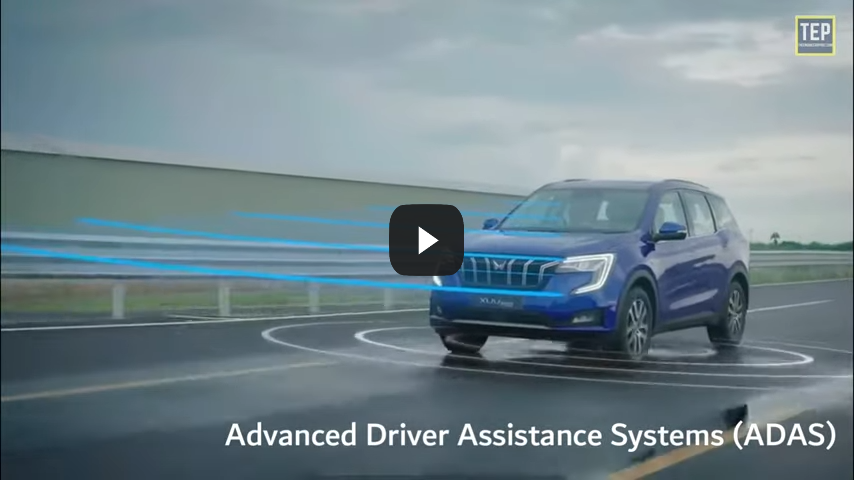Making Driving Safer through A.D.A.S.

ADAS, or Advanced Driver Assitance Systems is a set of technologies that were introduced to the automotive industry to ensure safer driving.
As vehicles get more and more hi-tech, and innovations lean toward cars going electric, automation becomes part of the blueprint for many carmakers. The reason for the automation technology found in many EVs today is not simply for the driver’s convenience and ease, but safety.
ADAS was created to prevent vehicular accidents from occurring. These systems keep roads safer because they were designed to prevent injuries (and even deaths) to occur due to errors that can be avoided while driving. In many road or vehicular accidents, human error is a common factor, and ADAS is added as a safety feature in many EVs and BEVs today.
(Also read: Safer and Smarter Solutions for Emergency Vehicles)
ADAS features many types of technology involving sensors, cameras, and automated software. All of these assist the vehicle’s driver in ensuring their safety when handling the vehicle on the road. These systems monitor conditions around the moving vehicle to help the driver make safer decisions behind the wheel.
Autonomous driving is a large factor in ADAS. There are many levels of automated driving, ranging from 0-5. As we go up the scale, the more autonomous the driving becomes.

Getting to Know ADAS Key Features
Depending on the vehicle’s make and model, certain ADAS features are already built into the vehicle. Some examples of these are:
Automatic Emergency Braking (AEB) - Sensors alert the system when a crash or collision is about to occur, and automatically brake the vehicle to avoid or reduce impact.
Adaptive Cruise Control (ACC) - A very useful feature for drivers who frequent expressways and busy highways, the ACC’s sensors detect the vehicle’s distance in relation to other vehicles on the road and adjust the vehicle’s speed.
Driver Drowsiness Detection - Handy for drivers who frequently travel at night, this feature keeps track of a driver’s behavior behind the wheel and alerts them when showing signs of sleepiness or drowsiness.
Rear cross traffic alert - Getting out of a parking spot can be tricky and risky, especially when another vehicle suddenly comes up behind. With the help of a camera, this feature detects motion from behind the vehicle and alerts the driver if there is one at the rear.
Lane control assist - This feature keeps the vehicle’s driver safely in their lane. If the vehicle senses the driver inch closer to lane markers, it can gently guide the vehicle back safely to its own lane.
Forward Collision Warning - A common occurrence while driving is not being able to quickly detect when the vehicle in front of you has slowed down. This feature warns the driver when it detects stopped or slow-moving vehicles in front of them, preventing a collision.
Traction control - This feature switches on when sensors detect that the vehicle’s wheels may slip on the road. While this feature does not create traction, it is useful for the driver to re-calibrate and assist in making the most of the traction available while driving.
Traffic sign recognition - This feature helps recognize traffic signs and displays speed limits.
Adapting ADAS
Technology like ADAS comes with its set of challenges such as availability and scalability. As practical a system as a lot of it offers, it is still quite an expensive one. Not all modern EVs or BEVs have ADAS features, but many from the luxury lines do.
However, many carmakers are making amazing advancements in adding more ADAS features into their vehicles for growing markets.
For example, Chinese OEM Xpeng recently released its XNGP ADAS for two of their vehicles: the Xpeng G9 Max and the P7i Max. These models previously did not have ADAS in the vehicles’ systems, so the upgrade will be delivered in an OTA (over-the-air) update, allowing the new ADAS to be embedded in the vehicle’s system wirelessly.
According to Yole Group, The update includes twenty-seven new functions, fifty-two optimizations, and forty other improvements.
Drivers can also expect more ADAS features such as full lane changing and navigation through crossroads later in 2023.
Meanwhile, the Renault Duster is expected to have ADAS embedded into its models in 2024. The third generation of SUVs is expected to roll out a new, hybrid engine and a sharper aesthetic.
With advancements like ADAS helping drivers become more responsible motorists, hopefully, the number of vehicular accidents and traffic errors decrease, and it helps motorists become more mindful and considerate on the road.
As one of the Top 19 EMS companies in the world, IMI has over 40 years of experience in providing electronics manufacturing and technology solutions.
We are ready to support your business on a global scale.
Our proven technical expertise, worldwide reach, and vast experience in high-growth and emerging markets make us the ideal global manufacturing solutions partner.
Let's work together to build our future today.
Other Blog




